Original air date: 19 March 2023
A graphical timeline of the episode is below

A relatively detailed timeline of the events of the episode are listed in the table below
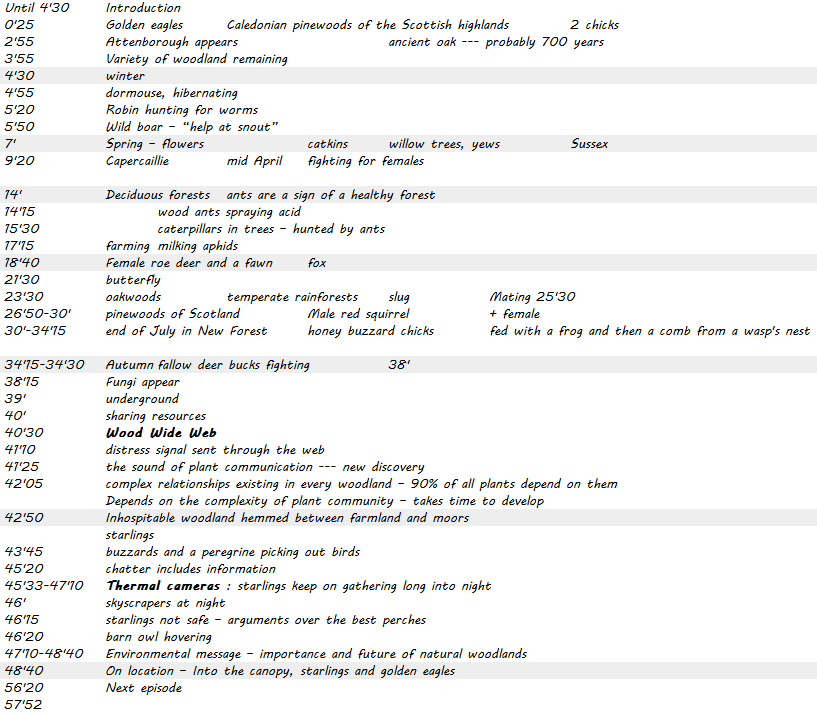
The blue coloured text bits could be regarded as the highlights of the episode.
The Wood Wide Web mentioned in the table is actually a connection of fungal threads between plants so that when one plant is attacked or comes across a resource like moisture the information is shared instantly. This connection which takes place both through so called hormones and sounds takes time to develop.
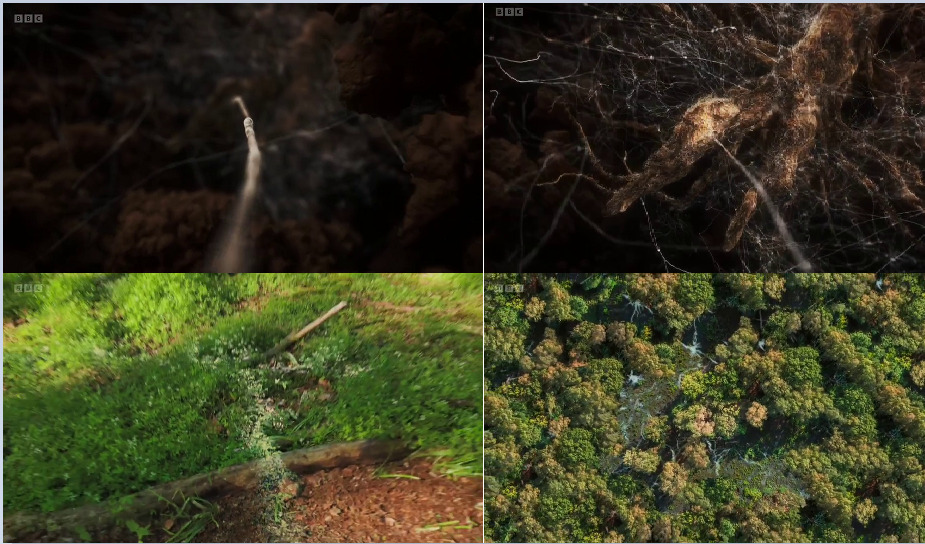
Fungal threads at work in the Wood Wide Web. A plant comes across something that needs sharing, either something good like food or information about an attack. The information is sent through fungal threads that connect all the plants and soon the whole neighbourhood has got the information and can either share the resources or take appropriate action, like producing poison (Green Planet).
Top left is the start of the message from the first plant and it being distributed to the many. Bottom left is the message being spread on the surface at a small scale (among grasses) but on the right is a larger scale distribution (among trees). Most of this was already known during the production of Green Planet, but the audible part was only recently discovered.
Filming starlings coming in to roost with thermal cameras revealed unexpected information.

Starlings coming in to roost at night, first (left) is normal technology. Then thermal camera takes over showing the murmuration. Starlings fighting for places and last (below), the whole roost lit up like a Christmas tree (further down).
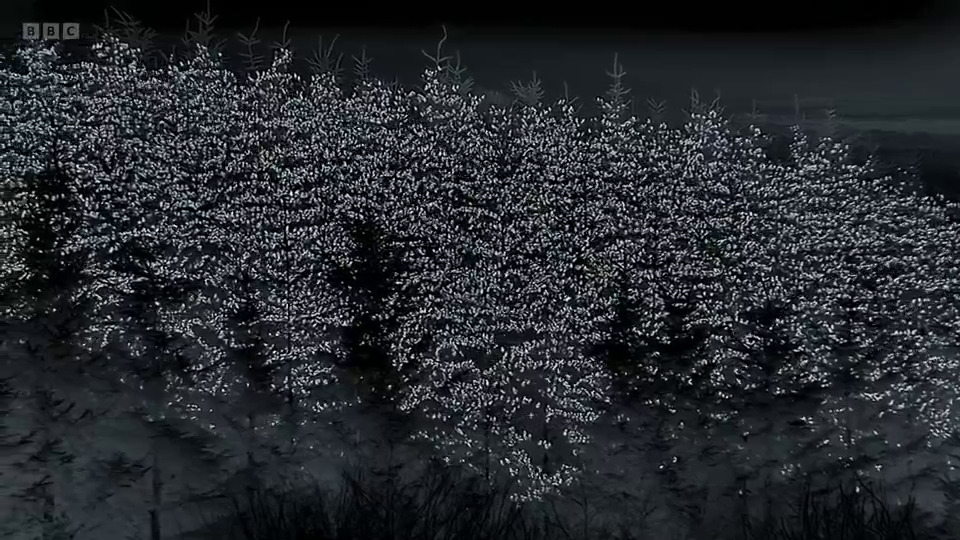
This thermal image is absolutely mesmerising. The starlings emitting heat make the trees look like a lit-up Christmas tree. Really spectacular !!!
The starlings have every reason to be worried and try to find a safer location, even when perching on the branch. They are not out of danger yet.
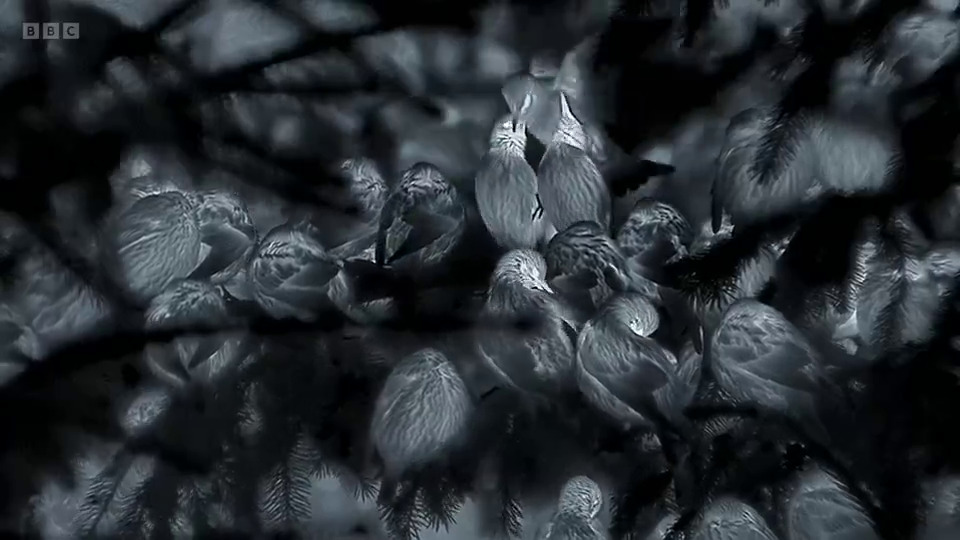
Even when the starlings have arrived at the roost the are constantly quarrelling, they realise they are not safe yet.
A barn owl has developed an incredible hunting technique hovering above the roost to pick a starling (top and bottom, where an arrow points at it because it can be hard to spot). Below there is an image showing the owl eating its prey (frame shots from 46′-46’30 in the episode).
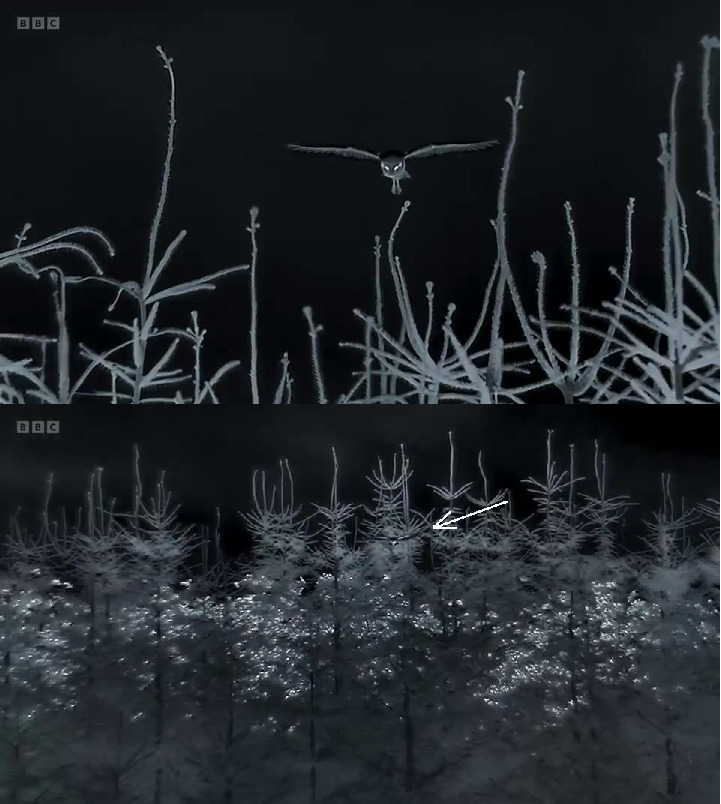
Through this new filming technology scientists have got new insight into what is happening in the roost at night
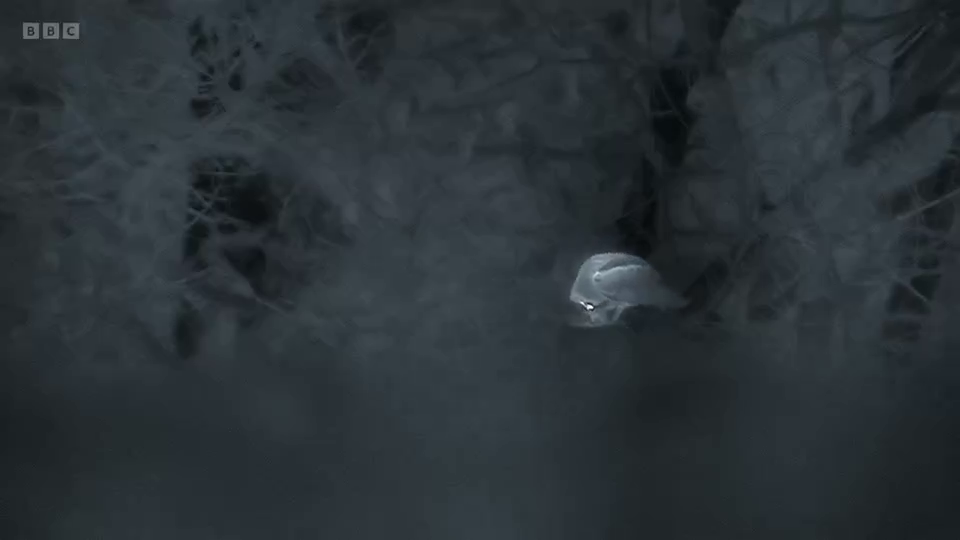
The owl eating its prey